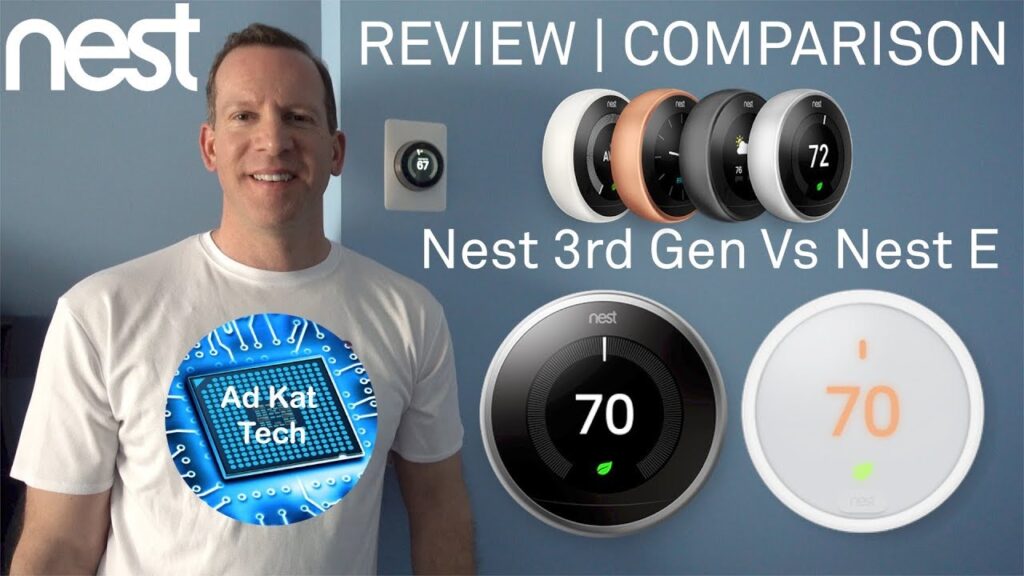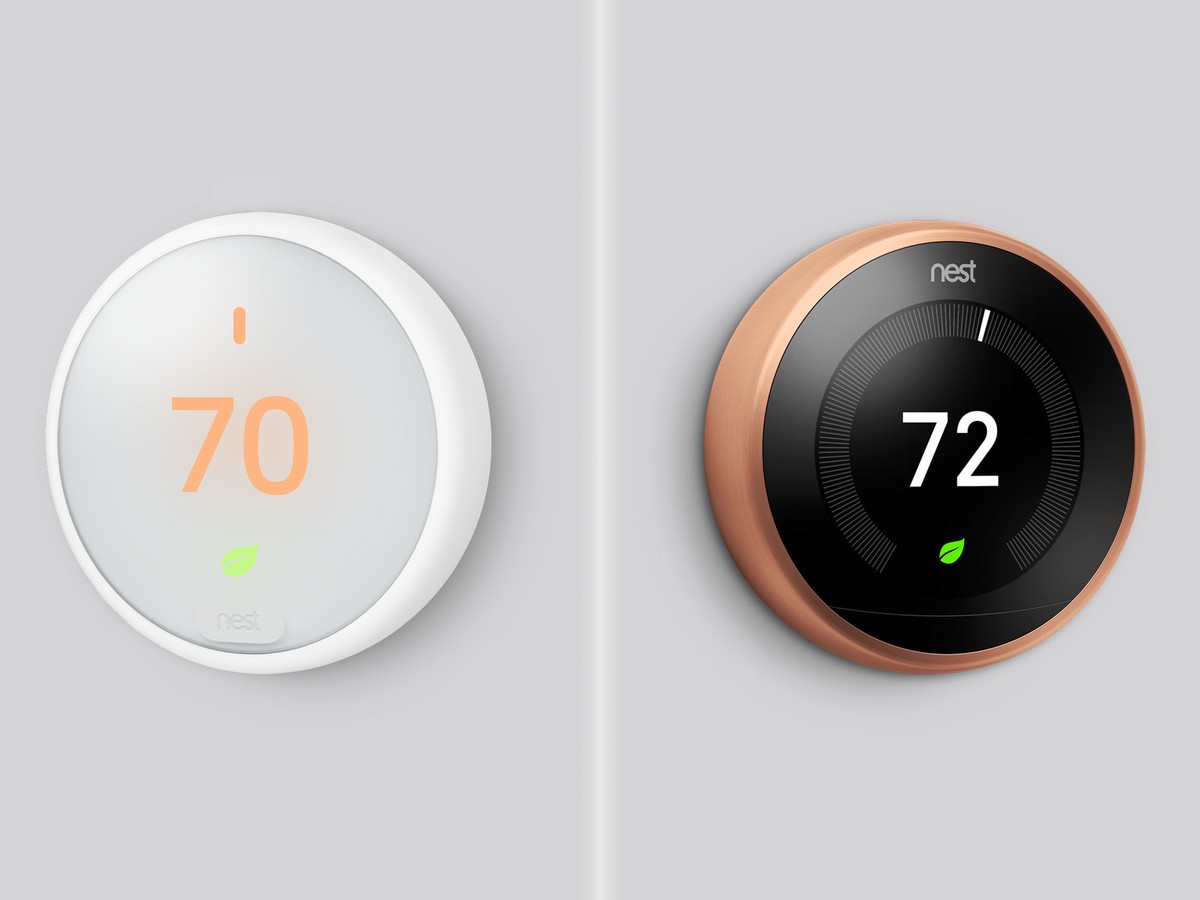
The original Nest Learning Thermostat debuted in October 2011 at $249. Subsequent generations followed with improvements, including second-gen devices the next year and third-gen devices in September 2015. While the original remains available, Nest Labs has released the Nest Thermostat E at $169, offering similar features with a few distinctions. Let’s delve into the similarities and differences between the Nest Thermostat E and the third-generation Nest Learning Thermostat:
Nomenclature and Design
Upon encountering the Nest Thermostat E, the conspicuous absence of the ‘Learning’ label from its name immediately grabs attention, notwithstanding its continued utilization of the identical artificial intelligence (AI) algorithm, which intuitively adapts to user preferences during initial use. The inclusion of the ‘E’ in its name ostensibly signifies ‘ease of use’ and ‘energy efficiency’, as suggested by a promotional video released by the company.
Regarding design, both the Nest Thermostat E and the third-gen Nest Learning Thermostat are circular. However, there are notable differences. The older model aimed to stand out, while the new one blends into the background like standard thermostats. The metallic ring present on the original device is absent on the ‘E’ variant, which instead features a white plastic ring with a ceramic-feel finish.
Unfortunately, the outer ring isn’t the only plastic component of the new device. It’s entirely encased in a polycarbonate body, unlike its more premium counterpart which features a metallic body. Nevertheless, the Nest Thermostat E retains the familiar rotary dial for controlling temperature settings. In terms of dimensions, the new device measures 3.19 inches in diameter and weighs 139 grams, slightly smaller and lighter than its predecessor, which measures 3.3 inches and weighs 243.7 grams.
Regarding the display of the Nest Thermostat E, it features a white, frosted overlay on a black background, giving it a grayish appearance when turned off. However, the display quality suffers as the new model ships with a smaller 1.76-inch 320×320 panel compared to the older version, which has a larger and sharper 2.08-inch screen with a 480×480 pixel resolution. Additionally, the E model has half the memory capacity, with only 256MB compared to the flagship device’s 512MB.
Sensors and Smart Features
Like its older sibling, the Nest Thermostat E can be controlled via the mobile app available on Android and iOS. The device includes pre-configured scheduling options manageable directly from the app. The new model shares the same learning capabilities as its pricier counterpart, and you can also control it with voice commands via Amazon’s Alexa or Google Assistant. However, there are key differences in the sensors between the two models. (Image: Nest Learning Thermostat on the left and Nest Thermostat E on the right.)
Although the Nest Learning Thermostat ships with 10 temperature sensors, its less expensive counterpart only ships with 2. The former also includes near-field and far-field activity sensors in addition to a proximity sensor, while the latter only includes a standard proximity and occupancy sensor. Both versions come equipped with indoor humidity and ambient light sensors.
While Nest has reduced hardware costs, one software feature, ‘Farsight’, utilizing internal motion sensors to display time or temperature, is absent in the new version. However, the motion-sensing technology remains, enabling cooling adjustments based on occupancy.
While the Nest Thermostat E offers reduced functionality in many areas, it introduces a new feature named ‘Basic Schedule’. Nest Labs claims this feature achieves significant energy savings by balancing comfort and economy.
Third-Party HVAC Compatibility
Based on data from Nest’s online compatibility tool, the Nest Learning Thermostat is compatible with approximately 95% of the 24V HVAC systems in American homes. The new device, however, is expected to work with only around 85% of these systems, encompassing gas, electric, forced air, heat pump, radiant, oil, hot water, solar, and geothermal systems. Both devices are designed by Nest to function without a common C wire, though some specific cases may necessitate its installation. It’s essential to check for this requirement before purchasing a new Nest Thermostat.
Price and Availability
As mentioned earlier, the Nest Thermostat E comes with a price tag of $169, $70 cheaper than the Nest Learning Thermostat priced at $248 on Amazon. While the latter is available in white, copper, black, and stainless steel, the new device is available only in white and is up for pre-order on Amazon, shipping from September 11. If you’re confused about saving $70 or spending extra for the flagship device, consider this: the Nest Learning Thermostat offers a two-year warranty, while the Nest Thermostat E offers just one year.
Nest Thermostat E vs Nest Learning Thermostat: Which Should You Buy?
This is a tough question because different people have different expectations from their smart home devices. If you value specs and are willing to spend $250 on a smart thermostat with functions that may lose their novelty, then the third-generation Nest Learning Thermostat is obviously a better choice. However, if you’re new to smart appliances and just want to understand the basics of an evolving IoT industry, the cheaper alternative works well. The Nest Thermostat E still offers most intelligent features, looks decent on your wall, and saves you money on electricity. However, it lacks the extra one-year warranty and bragging rights of the original third-gen device, so consider that before deciding.
| Device | Nest Learning Thermostat | Nest Thermostat E |
|---|---|---|
| Display | 2.08-inch, 24-bit color LCD, 480×480 | 1.76-inch, 24-bit color LCD, 320×320 |
| Diameter | 3.3-inch | 3.19-inch |
| Weight | 243.7 grams | 139 grams |
| Memory | 512 MB | 256 MB |
| Build | Metal | Polycarbonate |
| Battery | Rechargeable Li-Ion | Rechargeable Li-Ion |
| Sensors |
Nest Thermostat E vs Nest Learning Thermostat: Distinctions in Similarity
The Nest Thermostat E and the Nest Learning Thermostat cater to distinct consumer segments. While the original remains a preferred choice, the newer option holds its own merits. Are you considering purchasing or already own one of these devices? Share your thoughts in the comments below; we value your feedback.

Pritam Chopra is a seasoned IT professional and a passionate blogger hailing from the dynamic realm of technology. With an insatiable curiosity for all things tech-related, Pritam has dedicated himself to exploring and unraveling the intricacies of the digital world.




